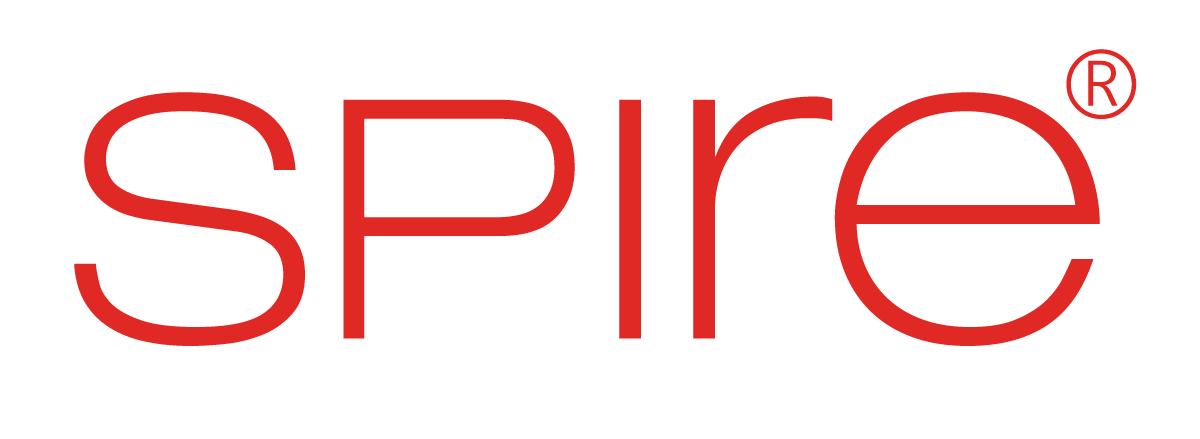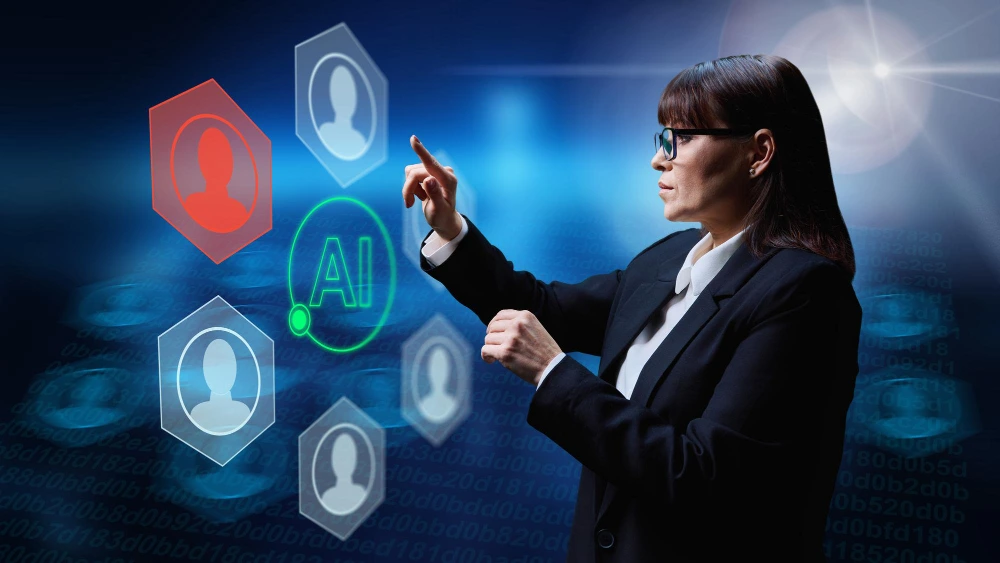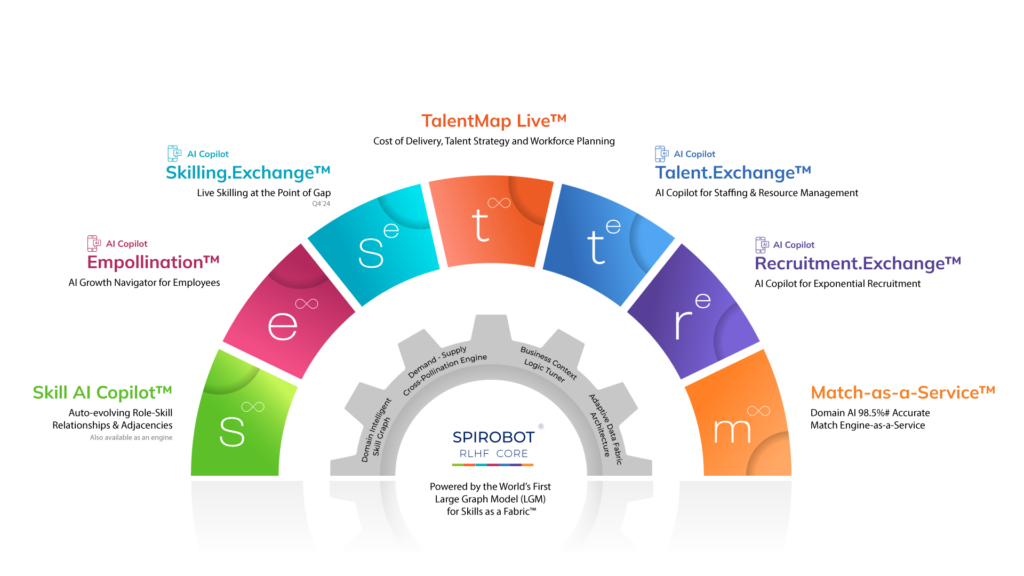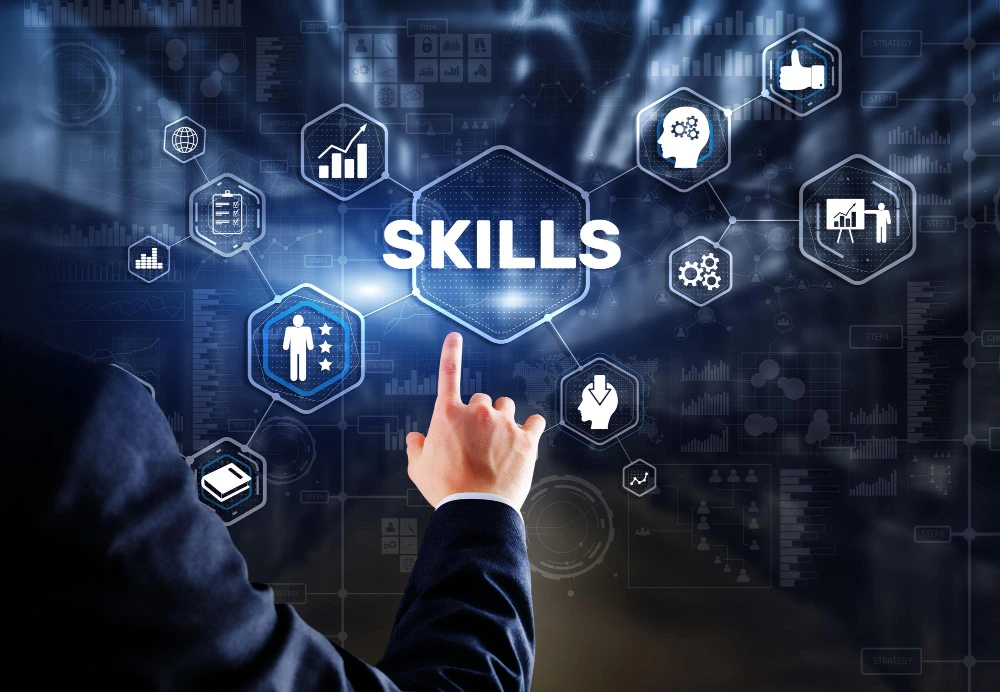For decades, HR and talent acquisition leaders have relied on traditional hiring methods such as job postings, resume screenings, and manual interviews to identify the right candidates. But in today’s competitive market, where efficiency and precision are paramount, these methods often lead to misalignment, high attrition, and slow hiring cycles. AI-driven intelligent matching is not just a technological innovation; it’s a game-changer that redefines talent acquisition and utilization, delivering measurable returns on investment (ROI).
This blog will explore how AI in staffing enhances fulfillment rates, reduces turnover, and accelerates revenue generation. We’ll also highlight Spire.AI’s impact in revolutionizing workforce deployment through intelligent staffing strategies.
The Cost of Ineffective Hiring
Before understanding the value AI-driven staffing delivers, it’s essential to examine the financial impact of ineffective hiring. A bad hire can cost an organization up to 30% of the employee’s first-year earnings, according to the U.S. Department of Labor. Additionally, employee turnover costs U.S. companies $1 trillion annually.
Traditional hiring models are plagued by inefficiencies.
- Prolonged hiring cycles reduce productivity and impact revenue. The longer a role remains vacant, the more a company suffers from lost output, added workloads on existing employees, and potential project delays.
- Mismatched skill sets lead to disengagement and performance issues. When employees lack the required competencies, businesses struggle with errors, missed targets, and decreased operational efficiency.
- High attrition rates create recurring recruitment costs and disrupt teams. Constantly replacing employees results in training expenditures, lost knowledge, and diminished workplace morale.
Beyond financial burdens, poor hiring decisions negatively impact company culture, employee satisfaction, and customer experience. Hiring inefficiencies extend beyond HR and affect every department, diminishing overall business success. This is where AI-driven intelligent matching comes into play, solving these issues through data-driven precision.
AI in Staffing: The Science Behind Intelligent Matching
AI in staffing is not just automation; it’s optimization. Intelligent matching leverages Domain-AI and Large Graph Model (LGM) for Skills, and predictive analytics to identify the best-fit candidates for a role.
Here’s how it works:
- Data-Driven Talent Profiling: Domain-AI evaluates candidates beyond resumes, analyzing experience, skills, cultural fit, and performance potential. Unlike traditional methods, AI assesses thousands of data points, including previous roles, professional achievements, education history, and even social sentiment analysis from professional networks.
- Predictive Success Modeling: It predicts candidate success by assessing past hiring outcomes and industry benchmarks. By analyzing employee tenure, job performance metrics, and organizational alignment, Domain-Intelligent AI ensures better hiring decisions. This modeling can even help identify candidates who might not have traditional credentials but possess skills and potential that match the company’s needs.
- Real-Time Market Insights: Domain-AI and LGM for Skills continuously scans market trends, salary expectations, and hiring patterns to ensure competitive offers. It helps companies adjust compensation and role descriptions to attract top talent while preventing under- or overpayment, which could lead to dissatisfaction or financial strain.
- Bias Mitigation: AI-driven systems reduce unconscious bias by focusing on skills and competencies rather than demographic factors such as gender, age, or ethnicity. Traditional hiring processes often allow human biases to influence decisions, whereas AI ensures a merit-based evaluation that leads to a more diverse and equitable hiring process.
- Automated Candidate Scoring and Shortlisting: AI assigns scores to applicants based on pre-set criteria, allowing recruiters to focus only on high-potential candidates. This dramatically reduces manual effort and helps HR teams make data-backed decisions.
Organizations leveraging AI-powered staffing solutions experience:
- Faster time-to-hire by reducing manual screening and automating candidate shortlisting, cutting hiring cycles by weeks or even months.
- Higher fulfillment rates due to precise role-candidate alignment, leading to stronger engagement and satisfaction. Candidates are matched based on objective analysis rather than intuition or bias.
- Improved retention as Domain-AI predicts long-term compatibility, reducing turnover and fostering career growth. By matching employees with roles that align with their strengths and professional aspirations, companies experience better engagement and loyalty from their workforce.
- Scalability in Hiring: AI-driven staffing solutions allow companies to quickly scale hiring efforts without a proportional increase in HR workload. Whether hiring for 10 positions or 1,000, Domain-AI ensures quality hiring at a speed.
Spire.AI: Revolutionizing Talent Acquisition and Utilization
At the forefront of AI-driven staffing, Spire.AI has transformed workforce management for organizations struggling with talent shortages and inefficiencies. Spire.AI’s intelligent staffing platform is designed to enhance precision, speed, and efficiency in hiring by leveraging deep-learning algorithms and predictive analytics. Unlike traditional staffing methods that rely on keyword matching and subjective assessments, Spire.AI delivers objective, data-driven hiring decisions that improve business outcomes.
By integrating real-time labor market insights, automated candidate matching, and predictive analytics, Spire.AI provides organizations with a competitive edge in securing top talent. Companies using Spire.AI report significant improvements in efficiency, cost savings, and workforce stability.
Spire.AI’s Business Objective: Delivering High-Impact Staffing Outcomes
Spire.AI is built on a singular mission: to maximize workforce efficiency through precision staffing. This is achieved by leveraging Domain-Intelligent AI.
Spire.AI: Delivering High-Impact Staffing Outcomes
1. Higher Fulfillment Rates
2. Reduced Attrition
3. Accelerated Revenue Growth
4. Strategic Workforce Planning
- Higher Fulfillment Rates: Spire.AI’s platform ensures that the right talent is placed in the right roles, significantly increasing placement success rates. Companies using Spire.AI report up to a 40% improvement in fulfillment rates.
- Reduced Attrition: By aligning candidate competencies with company needs, Spire.AI reduces early turnover. Clients have experienced up to a 50% reduction in first-year attrition.
- Accelerated Revenue Growth: Faster, more accurate hiring leads to quicker onboarding, which directly impacts business performance. Companies leveraging Spire.AI see 20-30% faster revenue realization from new hires.
- Strategic Workforce Planning: Spire.AI enables organizations to shift from a reactive hiring approach to a proactive talent strategy, ensuring long-term stability and workforce optimization.
Case Study: AI-Powered Staffing in Action
One of Spire.AI’s clients, a Fortune 500 tech company, faced a 60-day average hiring cycle for critical IT roles. Using Spire.AI’s platform, they reduced hiring time to 21 days, increased retention rates by 45%, and saved millions in lost productivity costs.
By leveraging Domain-AI and LGM for Skills, the company also achieved more accurate candidate-role matching, reducing training times and increasing overall employee satisfaction. Additionally, the use of predictive analytics helped the organization foresee potential hiring gaps, enabling them to prepare in advance and mitigate talent shortages.
These results underscore the power of intelligent matching in driving tangible business outcomes.
The Competitive Advantage of AI-Driven Staffing
Companies that embrace AI in staffing gain a strategic edge by leveraging intelligent matching technologies to optimize their workforce. The advantages extend far beyond recruitment, impacting overall business performance, employee engagement, and long-term workforce stability. Here’s how AI provides a distinct advantage.
- Building an Adaptive Workforce: AI-driven hiring ensures a steady pipeline of talent, reducing the risk of labor shortages. By analyzing historical hiring trends and market demands, AI helps businesses anticipate workforce needs and proactively address skill gaps before they impact operations.
- Enhancing Candidate Experience: Automated processes provide faster feedback, personalized job recommendations, and seamless engagement. AI-driven chatbots and recommendation engines enable candidates to receive real-time updates, tailored job alerts, and a more transparent hiring process, ultimately improving their perception of the company.
- Strengthening Workforce Planning: AI helps HR teams forecast staffing needs based on historical data and market trends, ensuring long-term stability. Organizations can use AI-driven insights to align workforce planning with business goals, reducing instances of overstaffing or understaffing and optimizing workforce productivity.
- Reducing Cost-Per-Hire: By eliminating inefficiencies, AI cuts hiring costs by up to 30%, enabling better budget allocation for other strategic HR initiatives. AI-driven automation reduces the need for manual resume screening, sourcing, and repetitive administrative tasks, freeing up recruiters to focus on strategic hiring initiatives.
- Increasing Diversity and Inclusion: AI helps mitigate unconscious biases in hiring decisions by evaluating candidates based on competencies and experience rather than demographic factors. AI-powered tools ensure fair and objective candidate evaluations, leading to more diverse and inclusive hiring outcomes.
AI in staffing is not a futuristic vision, it’s an operational necessity that drives profitability and workforce efficiency today. Organizations that implement AI-driven staffing solutions experience higher workforce stability, greater operational efficiency, and a competitive edge in talent acquisition.
Measuring the ROI of AI-Driven Intelligent Matching
To fully capitalize on AI-driven staffing, HR and talent leaders should track key performance indicators (KPIs) that demonstrate the tangible benefits of intelligent matching. These include:
- Time-to-Fill: Measure how AI reduces vacancy duration and accelerates hiring. AI-powered systems can automate candidate sourcing and screening, cutting hiring time from weeks to just a few days.
- Quality of Hire: Assess performance and retention rates post-hiring to ensure long-term success. AI-driven assessments help match candidates not only based on technical skills but also on culture fit and career growth potential, leading to higher job satisfaction and retention.
- Cost-Per-Hire: Calculate savings from reduced hiring efforts and lower attrition. By streamlining recruitment workflows, AI-driven platforms significantly cut down recruitment expenses while increasing hiring efficiency.
- Employee Productivity: Track business output improvements from AI-optimized placements, demonstrating direct financial benefits. Placing the right candidate in the right role enhances productivity, improves collaboration, and fosters innovation within teams.
- Retention and Turnover Rates: AI’s predictive capabilities help forecast employee longevity and job satisfaction, enabling proactive measures to improve engagement and retention. Companies leveraging AI-powered staffing solutions report up to 50% reductions in first-year attrition.
Organizations that integrate AI into staffing see an average ROI increase of 250-400% within the first year. AI-driven intelligent matching not only improves hiring efficiency but also enhances workforce performance, business agility, and long-term financial sustainability.
By focusing on data-driven decision-making, strategic workforce planning, and predictive analytics, AI-driven staffing solutions enable HR leaders to make hiring an engine of growth, innovation, and competitive advantage.
Final Thoughts
The business case for AI-driven staffing is clear: higher fulfillment rates, reduced attrition, faster hiring, and significant cost savings. As talent competition intensifies, companies that fail to adopt intelligent matching risk losing both revenue and workforce stability.
Spire.AI has demonstrated that AI in staffing is not just about hiring, it’s about unlocking workforce potential. By investing in intelligent staffing solutions, HR leaders can shift from reactive hiring to proactive talent optimization, creating a resilient and high-performing workforce.
Are you ready to redefine your staffing strategy? Embrace AI-driven intelligent matching today and turn talent acquisition into a business growth engine.






